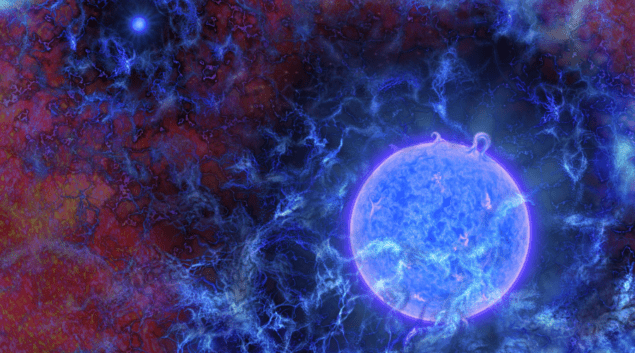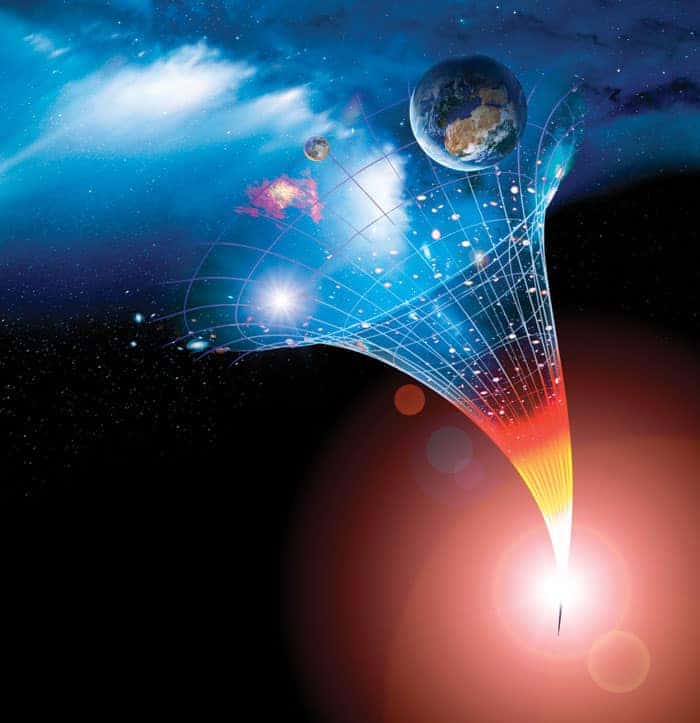
A potentially huge breakthrough in the study of dark matter has come from an unlikely source: radio emissions detected from hydrogen gas that existed just 180 million years after the Big Bang.
Dark matter makes up 26.8% of the total mass and energy in the universe, yet it continues to remain elusive. Astronomers have only been able to detect it through its gravity, while terrestrial experiments designed to identify dark matter particles have found nothing. However, new observations of the ancient universe suggest that the reason for this is that our experiments have been looking in the wrong place.
A team led by Judd Bowman of Arizona State University has used the EDGES all-sky radio antenna in western Australia to search for the faint signature of primordial hydrogen in the very early universe. When the first stars lit up, their ultraviolet radiation was absorbed by hydrogen atoms, which as the most common element is ubiquitous in the universe. This absorption caused the single electrons in hydrogen atoms to undergo a small jump between two hyperfine energy levels, releasing 21 cm/1420 MHz radio emission in the process.
Ancient history
EDGES was able to detect this emission, redshifted to a frequency of just 78 MHz by cosmic expansion. The redshift corresponds to an era just 180 million years after the Big Bang. However, there was a surprise. The amplitude of the signal was twice as large as had been predicted, and Bowman thinks this could be explained “if the gas in the early universe was colder than expected,” he tells Physics World.
The temperature of the gas 180 million years after the Big Bang had been expected to be about six degrees above absolute zero, but the strength of the signal detected by EDGES implied a temperature of just 3 K. The first implication of this observation is that it constrains when quasars switched on and began pouring out X-rays, since the X-rays would have heated the gas, but it is the second result, if confirmed, that could have the greatest repercussions for science.
Chilling effect
Rennan Barkana, of Tel Aviv University, suggests that dark matter is responsible for the hydrogen’s low temperature. At that point in time, the only matter that should have been colder than the hydrogen was dark matter, and if the dark matter particles and hydrogen atoms were scattering off one another, this would remove heat from the hydrogen atoms.
“If the dark matter interpretation of the new 21 cm signal is correct, then it is the first direct observational indication of a non-gravitational interaction,” says Barkana.
Although in the modern universe dark matter does not seem able to interact with ordinary matter through anything other than gravity, in the past this may have been different. The cold, low velocity conditions unique to that era may have permitted some interactions. For the scattering process to take place, the individual masses of the dark matter particles must be less than 4.3 GeV, which is equivalent to the mass of just a few protons. This is far removed from the expected region of 100 GeV, and could explain why experiments trying to directly detect dark matter particles are failing to find anything, because they are looking in the wrong energy range.
Dark matter did something
Although cautious about the results, Richard Massey of the UK’s University of Durham, who was not involved in the research, says that, “If this interpretation is correct, it would be a breakthrough that transforms the field: the first time in 40 years that dark matter is seen as doing something rather than nothing.”
Independent confirmation could come soon. EDGES measured the hydrogen emission by taking an average across the entire sky, but the Hydrogen Epoch of Reionisation Array (HERA), and the upcoming Square Kilometre Array, both in South Africa, will be capable of taking more intricate measurements. Since the dark matter hypothesis predicts a very specific pattern in the radio waves, Barkana says “the real test will come from these more detailed measurements”.

Theories of the dark side
Beyond that, “people will think very hard now about the consequences of the dark matter interpretation and perhaps some new tests will be identified,” says Bowman. If Barkana and Bowman are proven correct, then it will mean that dark matter’s days of remaining hidden from us will be numbered.
The observations and theoretical calculations are described in two papers in Nature: Bowman et al and Barkana.



